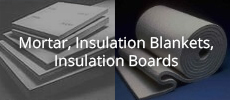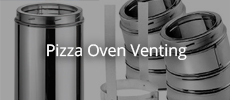Now that you mention it, I see the bricks lining up. I did not notice it before. I imagine you'll see a crack form there, but I'd be very surprised if it will fall down on you. I think a small crack will not cause it to fall down.
Announcement
Collapse
No announcement yet.
Northern Ontario oven build
Collapse
X
-
Thank you all for the input. I have decided on a housing.
I had a major disappointment yesterday. Many of you might have noticed from photos I have posted and been too polite to mention it. As much as I was aware of not lining up brick joints, and thought of it with every brick, I either was too focused on the joints or am just a dumbass. I did cut several bricks to avoid this exact situation, but obviously, not enough. Looking at my dome, one would think I was trying to line the joints up, the absolute worst being right up the middle of the front. Obviously, very poor construction but at this point, I am not about to bust it up and start over so I guess my project will be a test oven to see how bad it can be and if it will collapse on me. The oven integrity will rely on the design benefits of a dome, rather than the mortar. Yea, yesterday was definitely a bummer day. And in doing the squirrel tail venting, it seemed to go south on me too. I am fairly handy, usually, with metal and wood but starting to think brick work is not for me......
Today, I had a better day. I made a mold for the vent and cast it. I have spent way too much time trying to figure out how to use bricks to transition to the vent channel up the dome but thought a cast would be too difficult. turns out, it went way faster than the days I have wasted trying to figure out the other way. So today, I worked more on the squirrel tail, removing what I did not like that I had done yesterday and redoing it. Then reworked my chimney ideas. As for the joint up the middle of the front, I put some chicken wire embedded in mortar up the middle, like a bandaid. I don't really think this will do much but maybe better than nothing. This is also the channel for the ducting so hoping that it makes the area stronger for the temperature changes it will see. I think it will the first part of a cold dome to see heat since the hot gases will be exiting there immediately. Not a good place for a compromise! If anyone has other suggestions for me, feel free to chime in. I will try to have a thick skin....
So, having said that, to attempt to build an exposed dome in our climate would really be challenging a dome that I think is already compromised. But management and I spent some time looking at completed ovens and we are coming up with a vague plan for a housing. I have steel studs and cement boards on site so hoping to start that part soon. Weather here has been great for an outdoor project. I did not expect to get this far.
Thanks all.
Cheers,
Shawn
Leave a comment:
-
Consider a dome vent at the apex of the dome. Water will get into the dome not matter what you do, so when water sublimates to steam, the volume increases by 1500 times building up pressure under the dome's coating which could possibly lead to cracking. There are dozens of different styles of vents builders have concocted over the years, Gulf and I just used a cheap auto hydraulic breather vent you can get at any autoparts store but you need to plan ahead. It requires a 1/2" FPT bushing be set in the stucco or finish material.
Leave a comment:
-
I always pay close attention to discussions about this part of the build. Thanks to all who comment. Want the dome look and will be building in Central PA, USA...lot's of adverse weather! Fox, really like the look of that oven.
Leave a comment:
-
Any totally waterproof coating will not only keep water out, but also prevent moisture being driven out. Italian ovens are traditionally out in the weather with a porous lime based finish which allows the outer shell to breathe. This probably suited most of Italy, but the prevailing weather conditions in other places might mean a different approach. We live in the dry tropics and for most of the year a porous outer shell would be the most suitable, but during the wet season the oven is better to be waterproof, although I’ve experienced times when the oven will pick up considerable moisture from the atmosphere even if it actually hasn’t rained as our summers will often have high temperature accompanied with continual 95% humidity. Not waterproof coating will be of any use in that scenario. The best solution apart from an oven enclosure is probably to leave the outer porous and have a roof over the oven. This of course means more labour and expense and for most not worth the trouble. My own solution is to apply a cheap, very flexible, acrylic, hi build, waterproof product that was developed to coat the ridge cap mortar on tiled roofs. It is called, in our country, Flexible Pointing, designed to be troweled on I find it easier to paint it on in around 3 coats by diluting it 20% with water. This results in a finished coating of around 1.5-2 mm thick and copes well with expansion.Originally posted by deejayoh View Post
Everyone loves the dome look, but it is very difficult to seal the oven in northern climate, especially with freeze-thaw cycles. You need a waterproof stucco, and you need to make sure that no water can get in around the bottom of the dome where it meets the hearth. I know @utahbeehiver's is a dome - covered in very cool copper shingles. You might take a look at that. Personally, I went with a housing as in Seattle we get too much rain to take a risk!Last edited by david s; 10-05-2021, 12:01 PM.
Leave a comment:
-
If you dont want to cover your oven with a tarp over the winter then fiberglass coating over the dome will ensure there is no water penetration..
I offer this as a £300 extra with a terracotta finish but a DIY job would be around £75 for materials and will stand up to harsh winter conditions.
However I sill think covering any oven in the likelihood of snow is a good idea .
Leave a comment:
-
Everyone loves the dome look, but it is very difficult to seal the oven in northern climate, especially with freeze-thaw cycles. You need a waterproof stucco, and you need to make sure that no water can get in around the bottom of the dome where it meets the hearth. I know @utahbeehiver's is a dome - covered in very cool copper shingles. You might take a look at that. Personally, I went with a housing as in Seattle we get too much rain to take a risk!Originally posted by Shawnr View PostRegarding my previous post, I see that in post 7, UtahBeehiver mentions the terms Squirrel or beaver tail so I can try a search for those. Thanks. I had forgotten about that reply. Pays to reread threads sometimes I guess.
In that post, we briefly discussed outer dome coatings. I am wondering if anyone that lives in northern climates can comment on what they used and how it worked for them (or should I build a housing)
In a brief discussion with management this morning, we both agreed that we both like the dome look versus a housing. I have been planning on a housing due to our extreme weather here in Northern Ontario. (-40 in winter (occasionally) to +40 in summer (occasionally). I wonder if a stucco finish can take those extremes and still remain water tight. Any input?
Leave a comment:
-
You're most welcome Shawn. It added a level of complexity, but I like the look of it. Some say it helps with heating the dome, but for me it was more of an aesthetic thing.
Leave a comment:
-
Thank you MarkJerling that is how I am leaning to doing it, using bricks to form the smoke channel.
- Likes 1
Leave a comment:
-
If you check out my drawings or photos, those show a squirrel tail design.Originally posted by Shawnr View PostRegarding my previous post, I see that in post 7, UtahBeehiver mentions the terms Squirrel or beaver tail so I can try a search for those. Thanks. I had forgotten about that reply. Pays to reread threads sometimes I guess.
Leave a comment:
-
I have used ceramic board for the gallery floor, covered with a piece of Stainless steel, just make sure the S/S does not touch the oven floor bricks.
- Likes 1
Leave a comment:
-
Thank you fox . I was considering the thermal break around the walls but only recently realized the amount that would be absorbed into the vent floor so I will do something there. I am wondering if insulation firebrick is enough but since others have done the rope thing, I should go with that. We have lots of stucco houses in the area but since that is a vertical surface with building paper under it, if cracks develop, not a big deal. However in a dome application without the vapor barrier, I would think it is much more of a concern. To be safe, I think we will go with walls around the dome, cement board, then some kind of a stone or tile board on that. The walls will allow me to add extra insulation around the dome too so another benefit.
Leave a comment:
-
The reason for a thermal break is to stop to much heat loss going into the gallery section, so if you butt up fire bricks to the oven floor without a heat stop, then the gallery floor will suck up heat and espose to the air.
That is not unusual and many ovens operate that way, these things only really matter if you want to retain the heat for a long time?
So in the winter months you probably want to cover your oven with a tarp to keep the worst off the weather off the outside finish.
Different folk have different ways and ideas of how to seal the outside dome, where I live we use fibre cement, that is a 2-1 cement and fibre strands.
Our building trade just does not use lime in any exterior cement mix! You would get sacked of the building site if you did !
However it is obviously very different in other parts of the world as adding lime seems like standard practice!
Anyway I would suggest you see what is popular in your area and see how houses are plastered and with what.
Leave a comment:
-
Another question before I head back to work on the oven. When I laid out the floor insulation, I brought it right out to the predicted front edge of the vent floor landing. But since discussions have gone on about a thermal break between the dome arch and the vent structure, I am wondering if the insulation under the landing is not only not necessary but a bad idea, especially since my insulation is a rockwool product, as mentioned above. It seems quite hungry for water. (Picture buffalo board but 2" thick. )My reasoning being that if moisture ie rain gets into this area, it could wick deep into the floor insulation under the dome. I have seen some mentions of overhangs and of course the exterior door but thinking that removing this 2" insulation and replacing it with 2" firebrick (not mortared) might be a better idea....?
Any input for me?
Leave a comment:
-
Regarding my previous post, I see that in post 7, UtahBeehiver mentions the terms Squirrel or beaver tail so I can try a search for those. Thanks. I had forgotten about that reply. Pays to reread threads sometimes I guess.
In that post, we briefly discussed outer dome coatings. I am wondering if anyone that lives in northern climates can comment on what they used and how it worked for them (or should I build a housing)
In a brief discussion with management this morning, we both agreed that we both like the dome look versus a housing. I have been planning on a housing due to our extreme weather here in Northern Ontario. (-40 in winter (occasionally) to +40 in summer (occasionally). I wonder if a stucco finish can take those extremes and still remain water tight. Any input?
Leave a comment:





Leave a comment: